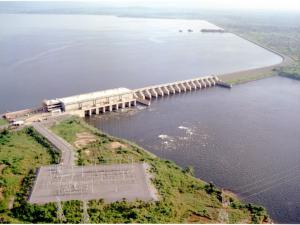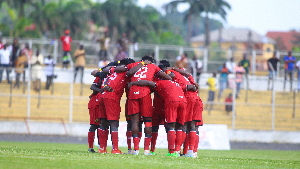Kpong Generating Station is, with an installed capacity of 160 megawatts, one of the important hydro-electric power generation sources in the country.
Completed in 1982, the installation constitutes 12 percent of the country’s energy production. The Kpong head pond, according to the Volta River Authority (VRA), has minimal storage capacity and is therefore operated in tandem with Akosombo as a run-of-the-river plant to optimise water use from the Volta Lake.
If all four units at Kpong are running, there is a rise in tail water elevation, which limits the output of the generation to about 148 MW.
The combined Akosombo/Kpong system has an installed capacity of 1,180 MW. This indicates the importance of keeping the plants up and running for maximum production after 30 years of operation.
In view of this, the Authority and its partners are to undertake a retrofit exercise, beginning this week, to replace worn-out parts and undertake remedial works on various aspects of the Kpong Generating Station.
The retrofitting exercise is estimated to cost €50 million and is being funded by the Authority, Agence Française de Développement (AFD) and other partners.
Kpong Generating Station currently generates about 145 megawatts of power; it has four installed units each generating 36 megawatts of electricity onto the national grid.
One unit is expected to be shut for retrofitting every eight months upon the commencement of the retrofitting exercise.
Plant managers believe that the retrofitting is imperative to avoid frequent failure going forward. They contend that after running the plant for 30 years, such an investment is crucial.
“You expect to get frequent failures after running the plant for such a long time. We don’t want to be caught by that. That is why we want to prepare. We have to keep up with technology. Our units will be more reliable [after the retrofitting],” Mr. Johnson Hlordjie, the Plant Manager at the Kpong Generating Station, told the B&FT during a visit to the station.
“One of the four units needs to be shut down and then in eight months’ time we will expect to get a new machine that will last for another 30 years. We will carry it out for the four units, and there is going to a lot of modifications on the sital system,” he said.
The retrofitting exercise, to be carried out by Andritz Hydro of Austria, is expected to last for about four years. AFD will finance the project with a concessionary loan of €50 million granted to the Government of Ghana. The funds will be on-lent to VRA under the same terms and duration. VRA will implement all the components of the project.
The AFD says the project will help to secure, for the next 30 years, 152 MW of power from the Kpong dam.
“It will help VRA, if feasibility studies are conclusive, to launch two dam projects which will reduce dependency on fuel oil and natural gas and will help to irrigate more than 100,000 hectares. Generally, it will help to improve the financial situation of VRA, which is necessary for the sustainability of electricity supply and its competitiveness on both the national and regional markets,” AFD said in a statement.
Concerns have however been raised about the impact of the exercise on current power generation in the country given that there is no power reserve margin to fall on.
There is currently a shortfall of between 150-200MW in power generation as a result of on-going scheduled maintenance works on VRA’s thermal plants in the Western Region. This portends intermittent outages if contingency measures are not put in place.
The poor inflow of water into the Akosombo, and consequently the Kpong dam, has also heightened fears of an imminent load-shedding if the situation doesn’t improve before the harmattan sets-in.
Among the measures are the development of some of VRA’s plants into combined cycle – crude oil- and gas-powered – to increase power generation.
The VRA is also undertaking four new projects that will generate about 700 megawatts of electricity within three to four years.
The Authority needs to invest US$200million annually in fresh generation to meet electricity demand, which is rising at around 10 percent every year.
Business News of Wednesday, 20 August 2014
Source: B&FT

















